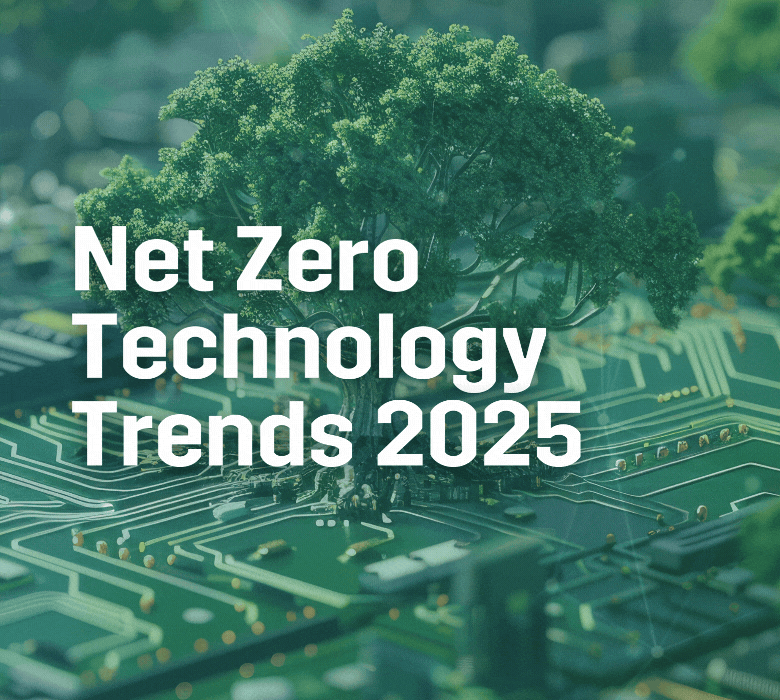NEWS & INSIGHTS | Opinion
Hydrogen technology predictions for 2025 | Net Zero Technology Trends 2025

Net Zero Technology Centre’s hydrogen principal Hayleigh Barnett shares her predictions for the rapidly evolving hydrogen market and the technology it relies on. This is part of our net zero technology trends 2025 series. Start exploring it here.
2024 saw a significant ramp up in hydrogen production projects announced thanks to a wave of new policies and investments worldwide. The global hydrogen project forecast now stands at 48 million tonnes per annum (Mtpa) by 2030, with green hydrogen leading the charge. However, many of these projects are still waiting to reach FID status, as there’s growing uncertainty around demand and regulation.
Our team of experts works with partners across the energy industry, from startups to top global energy firms, to identify and assess emerging technologies and help businesses understand the potential application and bottom-line impact of technology trends. Our early access to new technology keeps us at the forefront of the energy transition. Here we look at what’s on the horizon for the rapidly evolving hydrogen market.
Technology deployment set to increase but setbacks imminent

Low-emissions hydrogen production remains just under 1 Mtpa, a slight increase over the past 2 years – but still less than 1% of global production. Most of the hydrogen produced is blue, with less than 100 kt of green hydrogen by the end of 2023.
Europe leads with 40% of the global hydrogen project pipeline, followed by North America, China, and Latin America. Announced production volumes through 2030 have risen to 48 Mtpa – primarily driven by green hydrogen projects. However, historical completion rates suggest that the global supply of clean hydrogen will reach only 12-18 Mtpa by 2030.
The UK is predicted to achieve only 4 GW of low-carbon hydrogen production capacity by 2030, falling short of the 10 GW target.
There is also a significant mismatch between project FIDs and offtake contracts. Uncontracted production capacity in low-carbon hydrogen projects is expected to persist, largely due to challenges around securing offtake agreements. Currently, of the 5.5 Mtpa of low-carbon hydrogen projects that have taken FID, about 2.5 Mt of hydrogen remains uncontracted.
Gaps developing between governments’ production and demand targets
Global government policies and targets set for hydrogen demand are around 11 Mt by 2030, nearly 3 Mt less than last year due to revised targets in industry, transport and power generation. However, this is far behind the combined global target set by governments of 43 Mtpa production. This gap requires industry and governments to establish offtake agreements to stimulate supply-side investment.
Progress is being made. Over the past year, three governments have revised their hydrogen strategies and an additional 19 – primarily from emerging market and developing economies (EMDEs) – have introduced new national hydrogen plans. Currently, a total of 58 governments, alongside the European Union and the Economic Community of West African States, representing over 84% of global energy-related CO2 emissions, have adopted hydrogen strategies.
In 2024, several policy decisions significantly boosted investments in hydrogen. The UK’s first Hydrogen Allocation Round (HAR1) granted over £2 billion in operational support to 11 projects, aiming to facilitate £413 billion in UK investments by 2026. HAR 2 was also launched, aiming to support up to 875 MW of capacity with an increased focus on alternative technologies, whilst HAR3 and HAR4 are planned for 2025 and 2026, respectively, with each round allocating up to 750 MW.
Additionally, the third and fourth rounds of Important Projects of Common European Interest saw EUR 8.3 billion in national public support approved for 46 projects, with total costs amounting to double that figure. In the United States, $7 billion in grants were awarded to seven consortia planning hydrogen hubs.
Investments surge but acceleration essential
Investments committed to hydrogen projects have surged to $75bn, marking a 7-fold increase over the past four years. Additionally, investments in projects at the FEED stage have skyrocketed by a factor of 20, indicating notable progress towards deployment.
Despite this, regulatory uncertainties and macroeconomic challenges are causing delays, and the current pace of deployment is insufficient to meet climate commitments. An 8-fold increase in hydrogen investments is necessary by 2030 to expedite the decarbonisation of the global energy system.
The number of offtake agreements for low-emissions hydrogen and hydrogen-based fuels is growing, with several large, firm agreements announced, albeit accounting for just 1.7 Mtpa. The chemicals sector accounts for the largest volume of agreements. Although the refining and shipping sectors have committed to smaller quantities compared to the chemical sector, they exhibit a higher proportion of firm agreements. This indicates that conventional uses for hydrogen, such as ammonia production, methanol production, and refining, are more likely to adopt low-emissions hydrogen in the near term. These traditional applications pose a lower technological risk than new applications.

NZTC’s Hydrogen Backbone Link report demonstrated that investment in a purpose-built marine pipeline to transport hydrogen from Scotland to Europe is key to enabling Scotland to achieve its ambitious green export targets by 2045. However, despite some activity in infrastructure development globally, current investment levels are less than 5% of what is needed to achieve the IEA’s Net Zero Emissions Scenario projections in 2030.
Don’t miss out on three technologies set to disrupt the hydrogen market and explore more from the net zero technology trends for 2025 series for more insights and updates.
Subscribe for the latest updates





